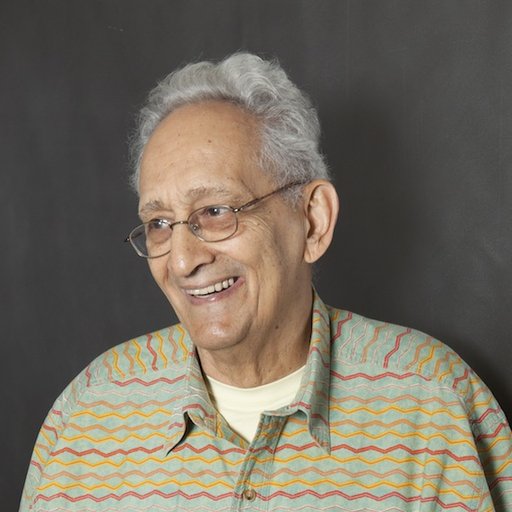On the surface, the Skateroom has a relatively straightforward mission: produce and sell skateboard decks featuring artwork by some of the most iconic artists of recent years, including Ai Weiwei, Marilyn Minter, and Jean-Michel Basquiat (to name just a few). Talk to its founder Charles-Antoine Bodson for more than a few minutes, however, and a wholly different vision of the business will emerge—his excitement over the new soup-can boards he debuted with the Andy Warhol Foundation during last week's Art Basel Miami Beachquickly shifts into even more enthusiasm for Skateistan, the Berlin-based NGO that works to empower youth in Afghanistan and Cambodia through skateboarding and education, and whose mission Bodson’s Skateroom exists to support.
Inspired by the work of Skateistan and its founder Oliver Percovich, the Belgian businessman and former purveyor of Brussels's Bodson Gallery quit his job, sold part of his extensive skateboard collection, and started the Skateroom with the goal of funding the organization’s endeavors. Now, with that intention enshrined in the company’s mission statement, and with a history of profitable collaborations under his belt, Bodson is teaming up with Paul McCarthy and his son Damon to fully fund Skateistan’s new skatepark in Johannesburg, a project that Bodson sees as an indication of the rise of “sensible” and ethical consumption in the 21st century.
Artspace’s Dylan Kerr sat down with the passionate entrepreneur over cappuccinos to find out how he found himself in this unusual line of work, and why aesthetes and skateboarders alike are helping to make the world a better place.
RELATED ARTICLES:
Skateboard Diplomacy: How Skateistan Founder Oliver Percovich Is Using Kickflips to Fight the Taliban
Let’s start with your story: how does a former gallerist and businessman winds up producing fine art skateboards for charity?
Like many of us, I skated when I was a kid. I’ve never been a good skater at all, but I loved the decks made by artists and started collecting them from a very young age, six or seven years old. My parents would offer me some skateboards made by artists for Christmas or my birthday, things like that. One day my father found an original board that was used by Mark Gonzales in the ‘70s or ‘80s, with drawings by Keith Haring on top of it. When he brought it to me I was so excited. I still have it—I want to keep it to give it to my daughter or my son. My interest in the medium began there.
At a certain point I met Oliver Percovich, the founder of Skateistan. They were looking for some funds in order to finance a project in Cambodia, and I decided to sell a part of this collection to help fund them. The year after I went to Cambodia to see the results. When I saw all those kids, I said, "Okay, this is what I want to do to give sense to my life."
At that time I had an art gallery in Brussels. I was selling works to very rich people, and it just didn’t excite or fulfill me anymore. I said, “I quit. I want to be the producer of skateboard decks, in order to support the Skateistan project.”
It was tough in the beginning. Eventually, we managed to produce a great project with Ai Weiwei—it was a huge success, commercially speaking. After that, it was easier to contact artists and to get retailers on board. Now, we’ve decided to be totally dedicated to Skateistan—our mission statement says that we are a social entrepreneurship project that backs the work that they do.
I should say that, bottom line, when you look at how Skateistan has evolved since then, it’s getting easier and easier for them to do their work. This is in part due to the money we’re giving them in support, and to the visibility that working with these famous artists grants them. I like the idea of consumption that has sense.
Can you give us a brief description of the kind of work Skateistan does?
Skateistan uses the skateboard as a hook to get children into education. Skateboarding gets the kids interested in the program, but after that they cross over to education, sports, and more broadly to a community of other people. These kids aren’t on the street anymore, without a future to think about—they’re on track to get the skills and support they need. When you look at the first skatepark built in Afghanistan eight years ago, the counselors are now kids that have been through the program. It’s brilliant—a great program with great results. People who support it once usually wind up prolonging their support for the long run.
I read recently that they’re working on a new project in Johannesburg, South Africa that you’re funding with the help of Paul McCarthy and his son, Damon. What’s the story behind that?
In a way, it starts with Paul McCarthy. I’ve been a huge fan of his work for the past six or seven years, and I had been trying to get in contact with him for so long, unfortunately without much success. One day we received a message that said, "Hey guys, I love what you’re doing. I would like to know how it would be possible to make decks with my father, Paul McCarthy."
I sincerely thought it was a joke. I have a good friend in Belgium who collects Paul McCarthy—he has several works—and I thought he was playing a joke on me. It wasn't the case. It was his son Damon McCarthy, who was, apparently, a big fan of our work. We immediately flew to Los Angeles, and found that the McCarthys are just a brilliant family. They’re very generous people, very interested in the concept of what we’re doing. Paul has become totally dedicated to the work—he had such great ideas.
When I was in Los Angeles talking with Paul about what project to fund, Oliver was in South Africa making plans for a new Skateistan facility in Johannesburg. Because of the massive production that we were doing with Paul, we decided to fully support the project—to pay for 100 percent of the skatepark in South Africa. The Skateroom committed to pay $250,000 to Skateistan, which was a lot because we hadn’t sold enough compositions to cover it. That was our engagement, though, so I decided to pay the rest out of my pocket.
The project is doing well. Skateistan is talking with the city government in order to receive the land for 25 years. With the support of Paul McCarthy, we have paid for all the installations and classrooms that are just beginning to be built now.
The boards that the Skateroom produces are really fine-art objects that operate on a different register from skateboarding aesthetics in general. Similarly, the audiences for contemporary art and skateboarding aren’t necessarily one and the same. How do you bridge that gap?
There have been many, many crossovers between these worlds over the past 30 years. I still have original skateboard works done by Keith Haring in my collection—this entire project came from that private collection, and those Haring boards specifically.
It’s difficult for skate culture to consider an Andy Warhol deck in an edition of 5,000 a “cool” board, but my objective is not to seduce these people with that product—it’s to make it possible to build skateparks around the world for kids who otherwise would be on the streets. I have to balance my production between three cultures: art collectors, skate culture, and social activists. I’m sure we will have a project in the near future that will be able to mix those groups and be considerate of all of them. Time will tell.
Do people actually ride these skateboards?
Of course!
So you know for a fact that there are kids out there shredding it on Skateroom decks?
Yes, I’ve received plenty of videos. The other day, I was in Paris and met this guy from HAY, the very famous Danish designer. He was with two kids with skateboards, and I offered them two of the Basquiat boards. Two days later, they had bought the wheels and everything and were sending us videos of them skating in Copenhagen. We love that. Paul McCarthy has insisted on including the wheels and trucks in his special-edition flight cases, so plenty of people are sending him videos of them riding his boards as well.
I would consider it a bit sad to not use these boards, but it’s true that they’re a mix—you can put them on the wall, you can use them, you can do whatever you want with them. Whatever people want to do, I thank them for being a part of this project. Without those people we wouldn’t be able to complete our mission, which is to finance Skateistan. Let’s be clear—that’s what we’re trying to do.
Do you run into any difficulties convincing these big names—Paul McCarthy, the Warhol Foundation, Ai Weiwei—to get involved with this project?
It’s a bit difficult operating out of Belgium, because the market and the artists are in the United States or in Asia. It’s difficult to convince them to commit, so I have to travel a lot. I have to say, people usually love the project once they hear about it. They start to understand that, yes, we can do something for others through the project and a sensible and engaged consumption.
What’s the potential for these kinds of socially-driven commercial projects? It seems like there’s been a real explosion of these kinds of creative solutions to world problems recently.
It’s important to realize that there are so many young people that do think differently. It’s not like in the ‘80s, when everyone wanted to make money on Wall Street. It’s different now. We’re global. We want to take care of people. We want to make the world a better place than what it is currently. Over the course of the past three years, I’ve been amazed to see how many social entrepreneurship projects there are out there. The people running them are young, they’re convinced of what they’re doing, and they’re working. It’s crazy. I’m one small player among so many others, and we all really believe that we can change the world.
RELATED ARTICLES:
Skateboard Diplomacy: How Skateistan Founder Oliver Percovich Is Using Kickflips to Fight the Taliban



























